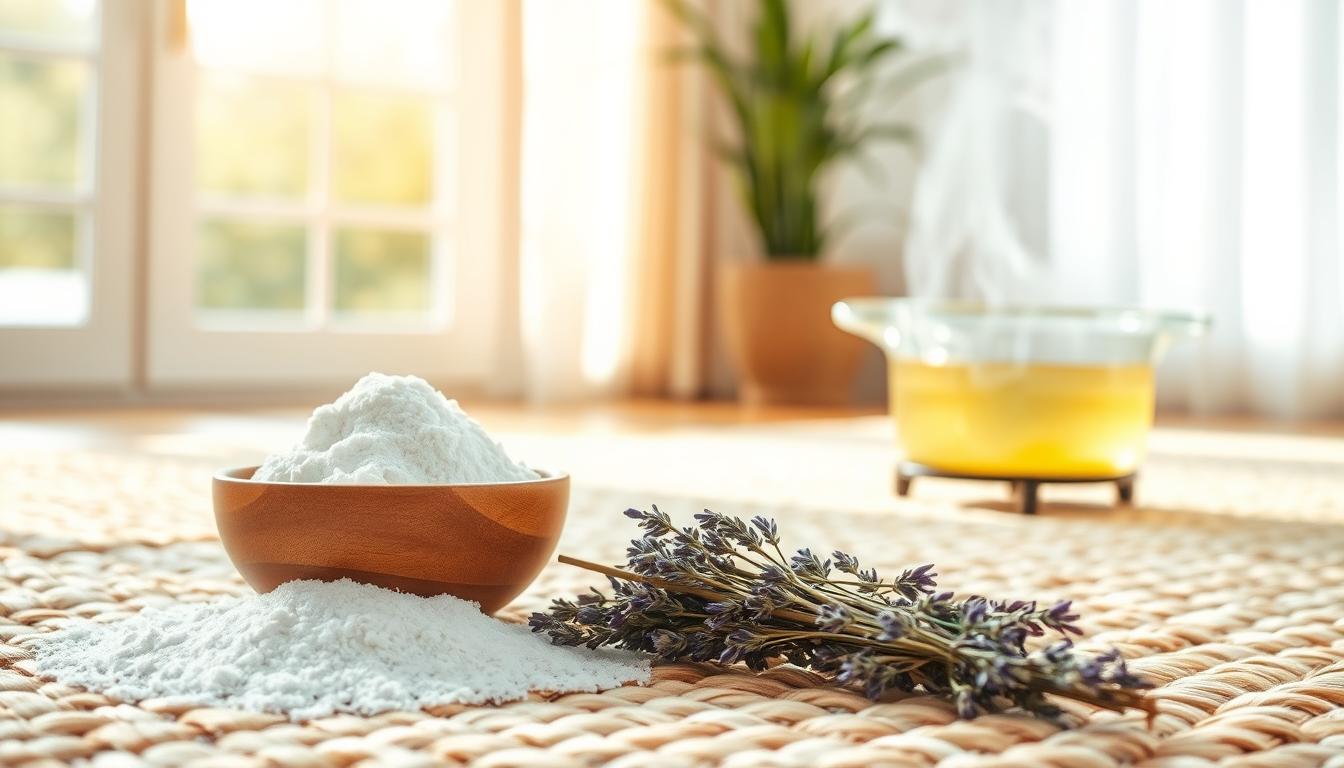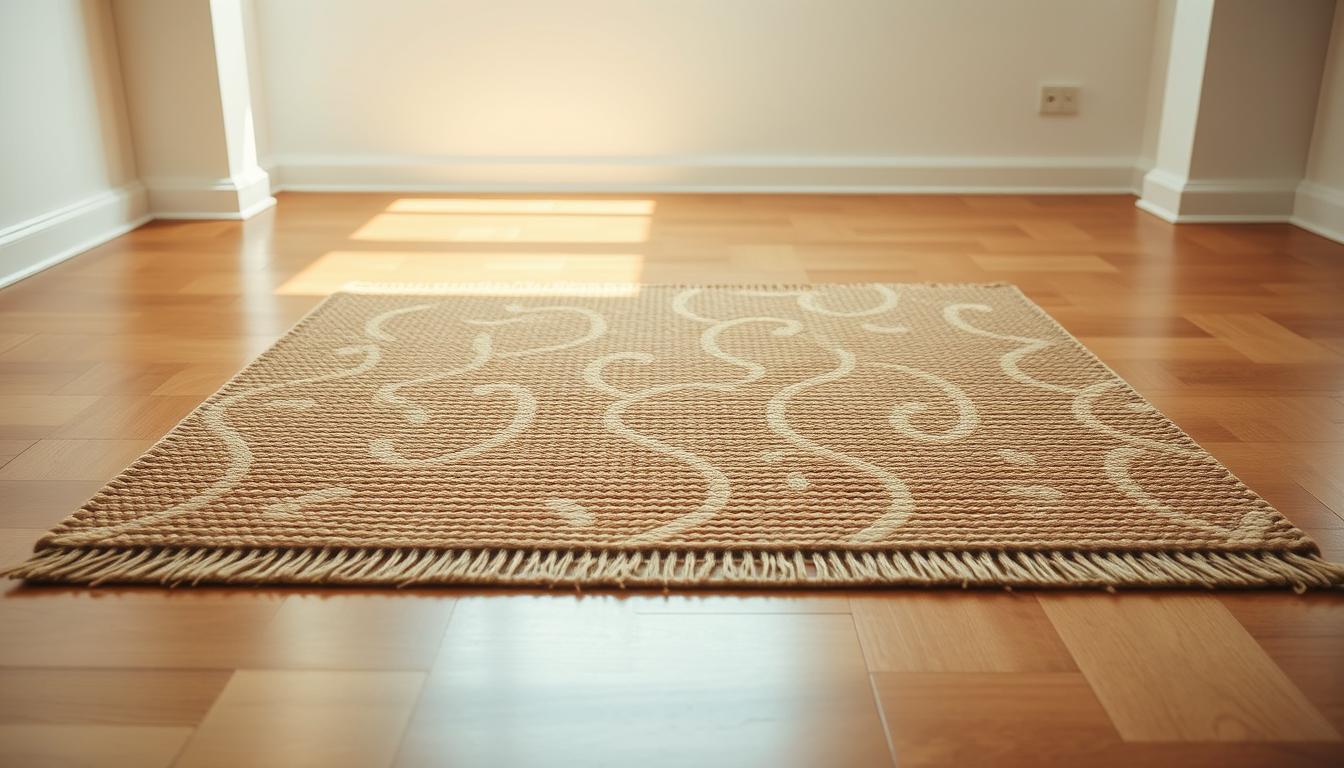Article: Seagrass Rug Smell: 5 Natural Ways to Eliminate Odor

Seagrass Rug Smell: 5 Natural Ways to Eliminate Odor

Natural fiber flooring brings earthy charm to your space, but that fresh aesthetic can sometimes come with an unwelcome surprise. Why do these sustainable home accents develop lingering odors that commercial cleaners often worsen? The answer lies in their unique structure and your environment.
Unlike synthetic materials, plant-based fibers naturally absorb moisture and airborne particles. This quality makes them eco-friendly champions but also odor magnets. High humidity, pet interactions, or even new rug "off-gassing" can create challenges for homeowners seeking chemical-free solutions.
Good news: You don’t need harsh products to restore freshness. Simple pantry staples and smart maintenance habits can neutralize smells while preserving your flooring’s integrity. The key lies in understanding why odors form and how to interrupt them at the source.
Key Takeaways
- Natural fibers absorb environmental odors more readily than synthetic materials
- Humidity and spills create ideal conditions for smell retention
- Baking soda effectively neutralizes odors without damaging delicate textures
- Proper air circulation prevents moisture buildup in woven surfaces
- New rug smells differ from persistent odors requiring targeted treatment
- Immediate spot cleaning prevents organic matter from becoming odor sources
Understanding Seagrass Rugs and Their Unique Challenges
Plant-based floor coverings bring coastal elegance to interiors, but their marine origins create distinct care needs. These materials evolved in tidal zones, developing survival traits that shape their household performance. Their strength comes from tightly packed cellulose structures formed through saltwater exposure.
What Makes These Fibers Unique
The same waxy coating that repels ocean water makes these floor coverings naturally stain-resistant. Dense weaving patterns prevent dirt penetration but can trap airborne particles. This combination explains why they withstand foot traffic yet need specific cleaning approaches.
Balancing Strength and Sensitivity
While these eco-conscious natural fiber flooring options outlast synthetics in dry areas, humidity reveals their vulnerability. Their moisture-absorbing quality helps regulate indoor air but requires vigilance. Spills left unattended seep into the core, creating ideal conditions for odor-causing microbes.
Proper care starts with understanding three key factors:
- Saltwater-hardened cellulose resists wear but lacks flexibility
- Natural wax layers repel liquids yet bind organic particles
- Tight weaves prevent staining but limit airflow
Seasonal changes affect performance too. Winter dryness can cause slight shrinkage, while summer moisture may lead to expansion. These natural shifts highlight why rigid cleaning rules don’t always apply.
Identifying the Causes Behind the Seagrass Rug Smell
Your natural floor covering might surprise you with its ability to trap unwelcome scents. The very qualities that make plant-based materials durable also create perfect conditions for odor development. Let’s explore what’s really happening beneath the surface.

Moisture and Odor Retention
Humidity acts like a magnet for scent particles in woven floor coverings. When dampness meets organic fibers, it creates a breeding ground for bacteria. This explains why basements or humid climates intensify musty aromas.
Spills pose a double threat. Liquid seeps into tight weaves, carrying food particles or pet accidents deep into the material. Surface cleaning might mask the issue temporarily, but trapped moisture leads to recurring smells.
Impact of High-Traffic and Pet Areas
Frequent footpaths collect more than just dirt. Oils from skin, outdoor debris, and compressed organic matter become embedded in the fibers. Over time, this mixture creates stubborn odor zones that resist casual cleaning.
Animal companions add another layer of complexity. Urine penetrates faster than most owners realize, while dander clings to textured surfaces. For those with plant-based flooring options, immediate action becomes crucial to prevent permanent scent absorption.
Airflow plays a surprising role too. Rooms with poor ventilation trap airborne particles in the weave, slowly building up that distinctive “lived-in” aroma. Recognizing these factors helps you tackle scents at their source rather than just masking them.
Natural Cleaning Methods to Eliminate Odor
Reviving your floor covering's freshness requires approaches that respect its natural composition. These solutions work with the material's properties rather than against them, ensuring lasting results without harsh chemicals.
Baking Soda: A Go-To Odor Absorber
This pantry staple neutralizes scents through chemical reactions. Sprinkle it evenly across surfaces, letting it sit for 2-4 hours. For concentrated trouble zones, mix three parts soda with one part water to create a thick paste.
Gently work the mixture into fibers using a soft brush. Allow it to dry completely before vacuuming. This dual-action process absorbs moisture while breaking down acidic odor molecules.
Dry Cleaning Alternatives for Sensitive Fibers
Moisture-free techniques preserve delicate textures. Specialized dry shampoos lift embedded particles when brushed into the weave. Look for plant-based formulas containing cornstarch or citrus extracts.
| Method | Best For | Application | Duration |
|---|---|---|---|
| Baking Soda | General freshness | Even sprinkling | 2-4 hours |
| Dry Shampoo | Traffic areas | Brush & vacuum | 30 minutes |
| Enzyme Treatments | Organic stains | Spot application | Overnight |
Rotate cleaning methods seasonally. High humidity months benefit from weekly soda applications, while dryer periods may need monthly treatments. Always test new cleaners in inconspicuous areas first.
Step-by-Step Guide to Removing Odor Effectively
When your floor covering holds onto unwanted scents, a strategic cleaning process is essential. Follow this systematic approach to refresh natural fibers while protecting their delicate structure.

Proper Spot Cleaning Techniques
Act quickly with spills or stains. Use white paper towels to blot—never rub—the affected area. Apply gentle pressure from the edges inward to contain the spread. For dried residues, scrape carefully with a dull knife before treatment.
Create a cleaning solution using 1 tablespoon white vinegar mixed with 2 cups water. Test it on hidden fibers first. Dab lightly using a microfiber cloth, working in one direction to prevent fraying. Blot excess moisture immediately after application.
How to Manage Pet-Related Stains
For urine or organic messes, start by removing solid waste with gloves. Blot liquids upward through the weave using layered towels. Apply enzymatic cleaners designed to break down proteins in biological stains. Let solutions sit for 15 minutes before blotting again.
Persistent odors may require specialized treatments. Explore pet-safe formulas that neutralize odors without harsh chemicals. Always work in ventilated areas and allow complete drying between applications.
Finalize your cleaning process with these key steps:
- Air-dry treated areas away from direct sunlight
- Gently brush fibers to restore texture
- Vacuum thoroughly once fully dry
Maintenance Tips for Lasting Freshness
Keeping natural fiber floor coverings fresh requires smart habits that match their unique needs. Simple routines prevent odor buildup while preserving your flooring's texture and appearance.
Regular Vacuuming and Dust Removal
Set a weekly schedule using a vacuum cleaner with soft bristles. This removes surface dirt before it sinks into the weave. Always adjust height settings to avoid scratching delicate fibers—hover slightly above the surface for best results.
Focus on high-traffic zones where debris collects. Move furniture periodically to clean hidden areas. For corners and edges, use crevice tools to lift trapped particles without tugging threads.
Preventative Measures Against Moisture
Moisture protection starts before spills happen. Quality rug pads create air pockets that reduce floor contact. In humid climates, run dehumidifiers during peak summer months to maintain 40-50% humidity levels.
Blot liquid accidents immediately with absorbent cloths. Never rub stains—pat gently until no moisture transfers to your towel. For detailed spill management techniques, consult our comprehensive cleaning guide.
Rotate floor coverings seasonally to ensure even wear and airflow. During rainy months, check for curling edges that might indicate excess dampness. Address these signs quickly to prevent long-term issues.
Additional Natural Tips and Considerations
Maintaining freshness in natural fiber home accents requires smart product choices and environmental awareness. Household items you already own can become powerful odor fighters when used strategically.
Selecting Safe Cleaning Solutions
Choose plant-based cleaners with neutral pH levels to protect delicate textures. Look for products containing enzymes or citrus extracts that break down organic residues gently. Always test new solutions on hidden areas first—this simple step prevents color fading or fiber damage.
For tough odors, consider using activated charcoal or coffee grounds. These natural absorbers draw out trapped particles without harsh chemicals. Sprinkle them evenly across surfaces, then vacuum after 2 hours.
Optimizing Air Movement
Cross-ventilation accelerates odor removal. Open windows on opposite walls and position fans to create airflow paths. Place one fan blowing outward to push stale air from the room. This technique also helps prevent moisture buildup in humid spaces.
Rotate floor coverings quarterly to ensure even air exposure. During cleaning sessions, use portable air circulators to dry fibers faster. These methods work with your existing solutions to maintain lasting freshness between deep cleanings.
FAQ
Why do natural fiber rugs develop odors over time?
Natural materials like seagrass absorb moisture and trap dirt, especially in high-traffic zones. Without proper care, organic fibers can retain smells from spills, pets, or humidity.
Can baking soda damage delicate fibers during cleaning?
No—when used correctly, baking soda is gentle and non-abrasive. Lightly sprinkle it on the surface, let it sit for 15–20 minutes, then vacuum thoroughly. Avoid scrubbing to protect the material’s durability.
How do you address pet-related stains without harsh chemicals?
Blot spills immediately with a dry cloth. For lingering odors, mix equal parts white vinegar and water, lightly mist the area, then dab with a clean towel. Always test solutions in an inconspicuous spot first.
What’s the best way to prevent moisture buildup in woven rugs?
Improve airflow by rotating the piece periodically and using a dehumidifier in damp spaces. Avoid placing it in bathrooms or near entryways where water exposure is frequent.
Are vacuum cleaners safe for maintaining natural fiber rugs?
Yes—use a vacuum without a beater bar on a low setting. Focus on removing surface dust weekly, paying extra attention to corners and edges where debris accumulates.
Can I use steam cleaning on plant-based materials?
Steam or excessive water can warp fibers and weaken their structure. Stick to dry methods like gentle brushing or professional-grade absorbent powders designed for delicate textiles.








